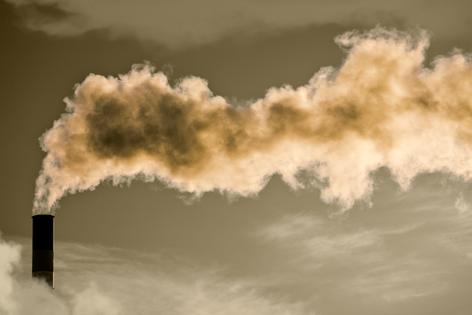Even low-level air pollution may harm health
Published in Health & Fitness
A new scientific report supports research suggesting that even low levels of pollution — well below the current national regulatory cutoffs — may harm our health.
Outdoor air pollution stems largely from the burning of fossil fuels (coal, gas, oil), which generate noxious gasses, smog, and soot. Smog, which makes air look hazy, is created by ground-level ozone. Soot is fine particles — you may see a dusting of soot on a windowsill, for example. The burning of fossil fuels is a major contributor to climate change that occurs over years, but it has more immediate health effects.
How can air pollution affect our health?
Research links increased levels of fine particles in the air that are tiny enough to be easily inhaled (called PM2.5) to more hospitalizations for heart disease, stroke, diabetes, and pneumonia. It also worsens existing lung disease, known as chronic obstructive pulmonary disease (COPD), and may cause other serious health problems. Both long-term exposure and short-term exposure seem to matter to our health.
A 2021 study looked at global models of pollution levels and risk assessments of the world population over 14 years. It tied fossil fuel alone to nearly nine million premature deaths worldwide in 2018 — that’s one in five deaths — including more than 350,000 in the United States. Most of these deaths are due to heart attacks and strokes.
People with underlying health conditions like asthma, heart disease, or diabetes, older adults, and people who live in low-income communities, which are often situated near polluting sources, are among those who are more likely to be harmed by air pollution.
How does low-level pollution affect us?
In the US, air pollution has improved quite a bit since the passage of the 1970 Clean Air Act. Current air quality standards set by the Environmental Protection Agency (EPA) spell out a certain annual threshold of particulates aimed at protecting health. But as we learn more about complex relationships between pollution and our ecosystem, growing evidence suggests that harm may occur at PM2.5 levels lower than the current standard.
The new Health Effects Institute report (note: automatic download) studied 68 million older Americans from all but two states across the US over a 16-year period.
The researchers had set themselves an incredibly challenging question to answer. There are innumerable variables to calculate: an individual’s exposure to pollution based on where they live, the independent contribution of the major air pollutants separately, health and behavior confounders that factor into mortality, and more.
...continued







Comments